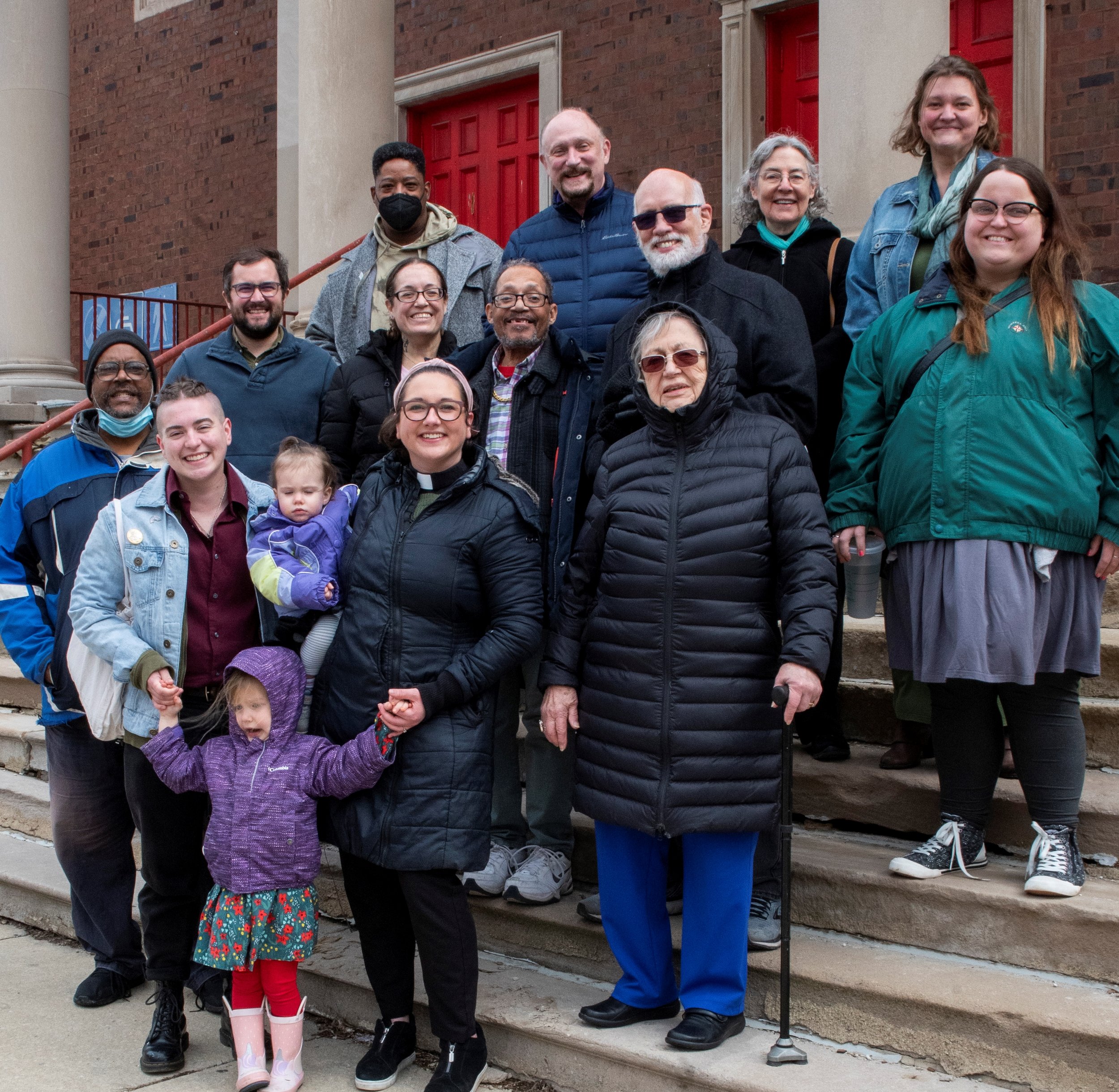A LEGACY OF ACCESSIBILITY
Remembered by Sue Davies, Oakland, California March 2022
Preface: Following the recent death of my 81-year-old husband, Tom, old friend Rev. Tom Grey called to offer his condolences. Our conversation kindled warm remembrances of Rogers Park and some of the most meaningful times in our married life. Clear memories of Tom’s involvement in the elevator project flooded back. Tom told me about the bold new project, Uplift Accessibility Project, that UCRP has launched to continue to serve the needs of the community.
History: Tom and I began attending United Church of Rogers Park in 1974 around the time Tom Grey came as the new Methodist minister. It was called “United” because it was a combination of a Methodist pastor serving a combined Methodist and Congregational congregation in the Congregational building. As I understand it, the reason for the merger was that the Methodist church had burned, and had no building, and the Congregational Church had a building but no minister. A vote was taken by the two churches, and the Methodists won out as the denomination to which they would belong.
The church building is a huge edifice built in 1920 at the corner of Ashland and Morse Avenues on Chicago’s far northside. It was built by the Congregationalists in the construction style that followed their way of thinking about churches. Each community should have one large, imposing structure that would draw people to it. This idea was in stark contrast to the Methodist philosophy of establishing many smaller churches in a community and thereby be closer to the many neighborhoods within a community.
To help us get established in Rogers Park where we had just bought property, but had no roots or family ties, we decided to look for a church. After attending United Church a few times, the retiring minister had taken my Tom aside and said he hoped we would join the church because he felt the older people in the congregation couldn’t keep it going much longer, and he thought Tom had good organizational skills that could be helpful to a new minister in dissolving the congregation. God works in mysterious ways, however; Pastor Tom Grey had accepted the call to serve United Church.
Tom and his wife, Carolyn, and their two young children, Amy and John, brought a spirit of youth, life and optimism into the church. Joining the church was a good fit for us; our kids were the same age as theirs, and we about the same age as Tom and Carolyn. Besides we liked them.
Tom Grey inspired us with his unflagging optimism and drive to have our congregation serve the ever-changing needs of the Rogers Park community. The building structure presented many obstacles to make our church accessible to all. The church dining room was located on the third floor with no elevator access. Strange logic, but when it was built Overdier Hall was located on the top floor of the church so the congregation could have a view of Lake Michigan. The problem was people had to climb two flights of stairs to get to meeting rooms, and three flights of stairs to get to food or coffee.
Another lack of accessibility was getting into the front of the church. A long set of solid concrete steps with no handrails led up to the church entrance. Then, to make matters worse there was no level way into the Narthex and Sanctuary.
The situation was not all bleak. Some money had been left to the church to build an elevator and some preliminary plans had been drawn up. The three Toms, Tom Davies, Tom Hickey, an architect friend and neighbor of ours, and Tom Grey put their heads together to make accessibility a reality at United Church. Tom Grey paid Tom Davies a lovely compliment when he said to me, “No other person but your Tom could have visualized the project, see what had to be done, get buy in from all parties, and find the right people to develop and complete the complicated project.” The project couldn’t have moved forward without Tom Hickey generously donating his architectural plans for the elevator pro bono.
The configuration of all three street-level stores on the Morse Ave. side of the church had to be changed, but the three Toms noticed the walls separating the shops were not loadbearing. One of the stores, a shoe repair store, was closed. Marjorie Keenleyside, the grand dame of the Thrift Shop, whose mother had started it many years before, had to be convinced that the changes to the Shop were a good idea. The elevator had to be placed at the back of one third of the farthest section of the opened-up space, but overall the changes actually doubled the size of the Thrift Shop. In the end, Marjorie was convinced; and in the ensuing years the Thrift Shop has steadily contributed $1,200 monthly to the operation of the church.
The three Toms’ planning also included a wheelchair ramp built to the right of the steep front concrete stairway. Tom D. found a German crew to build a ramp supported by a metal structure. The project was completed. The second and third-floor rooms and kitchen were finally accessible to one and all.
Now: Nearly 50 years later, United Church continues its mission of serving the constantly changing Rogers Park neighborhood. Accessibility now means taking down the old corroded wheelchair ramp and creating a new ground-level entrance on the southwest corner of the building. The visionaries of the Uplift Accessibility Project seem equally as competent as the Three Toms. United Church’s mission remains the same.


